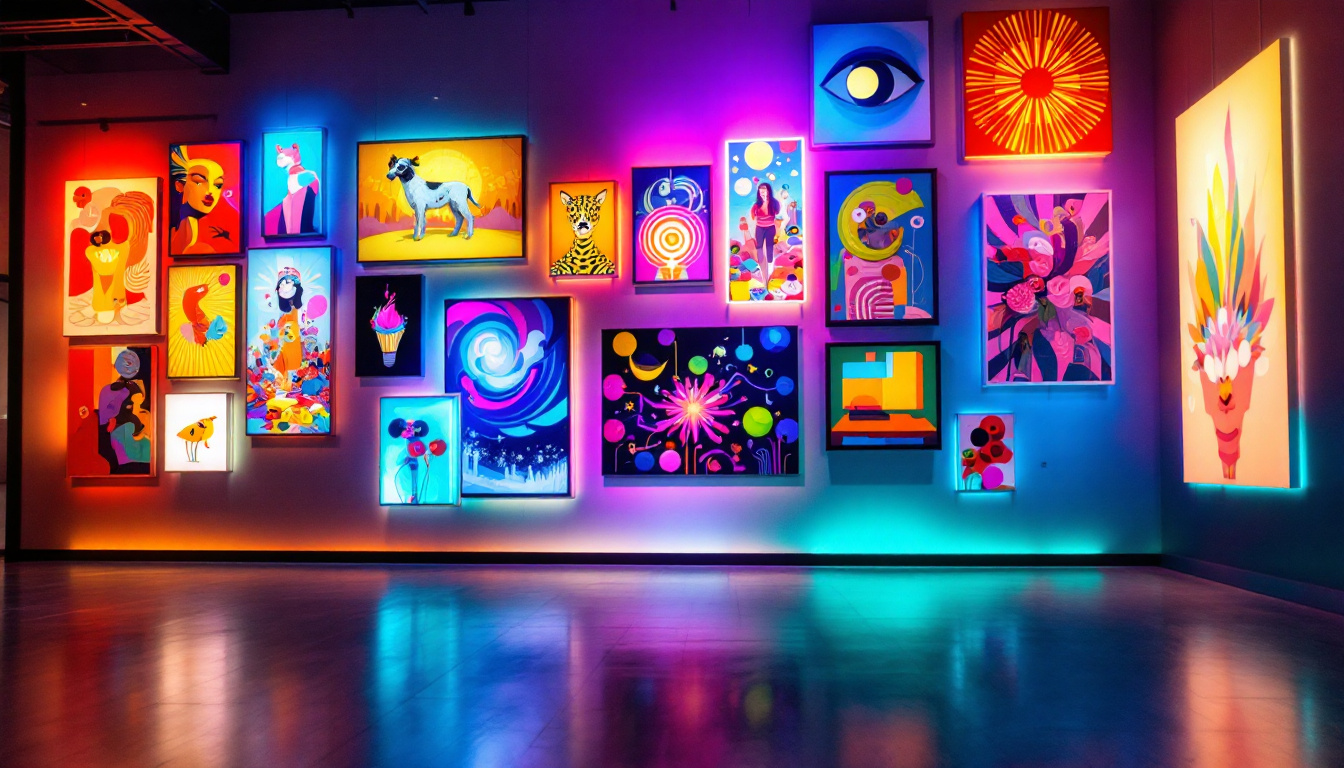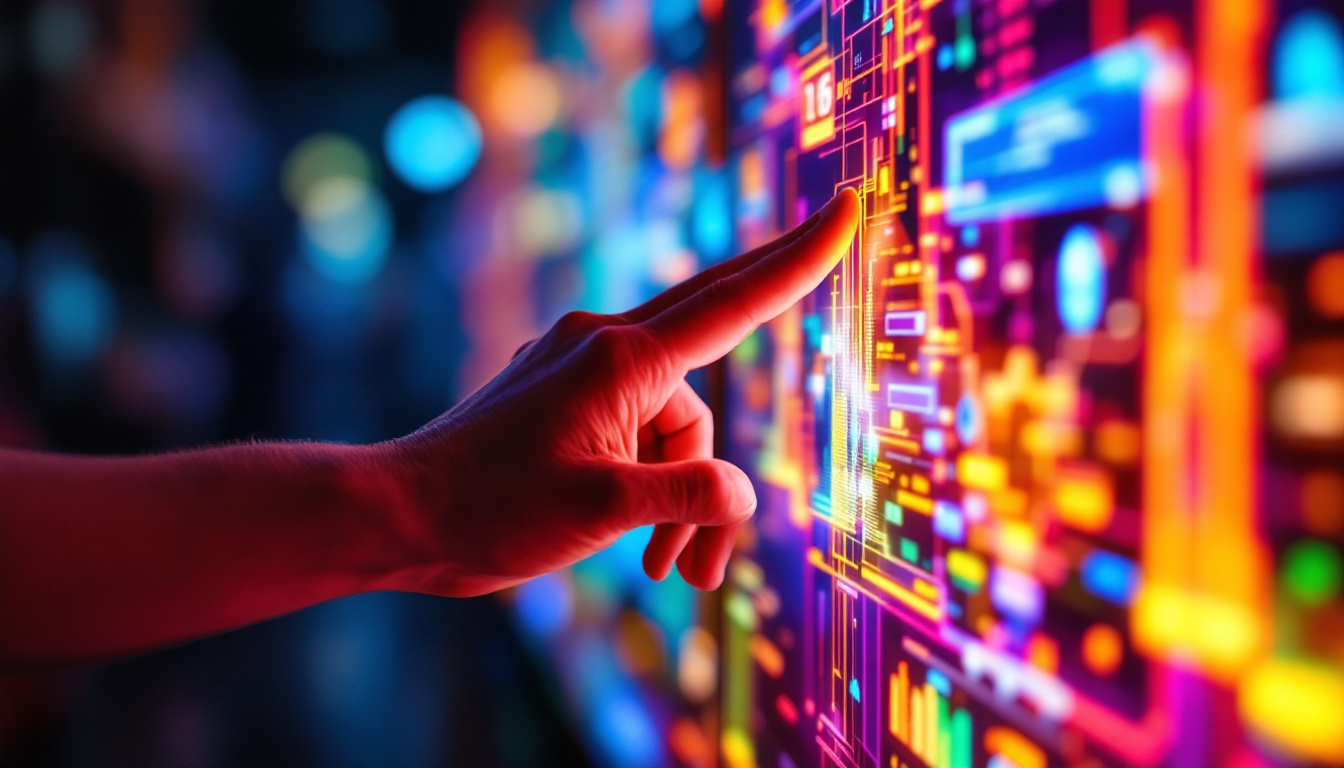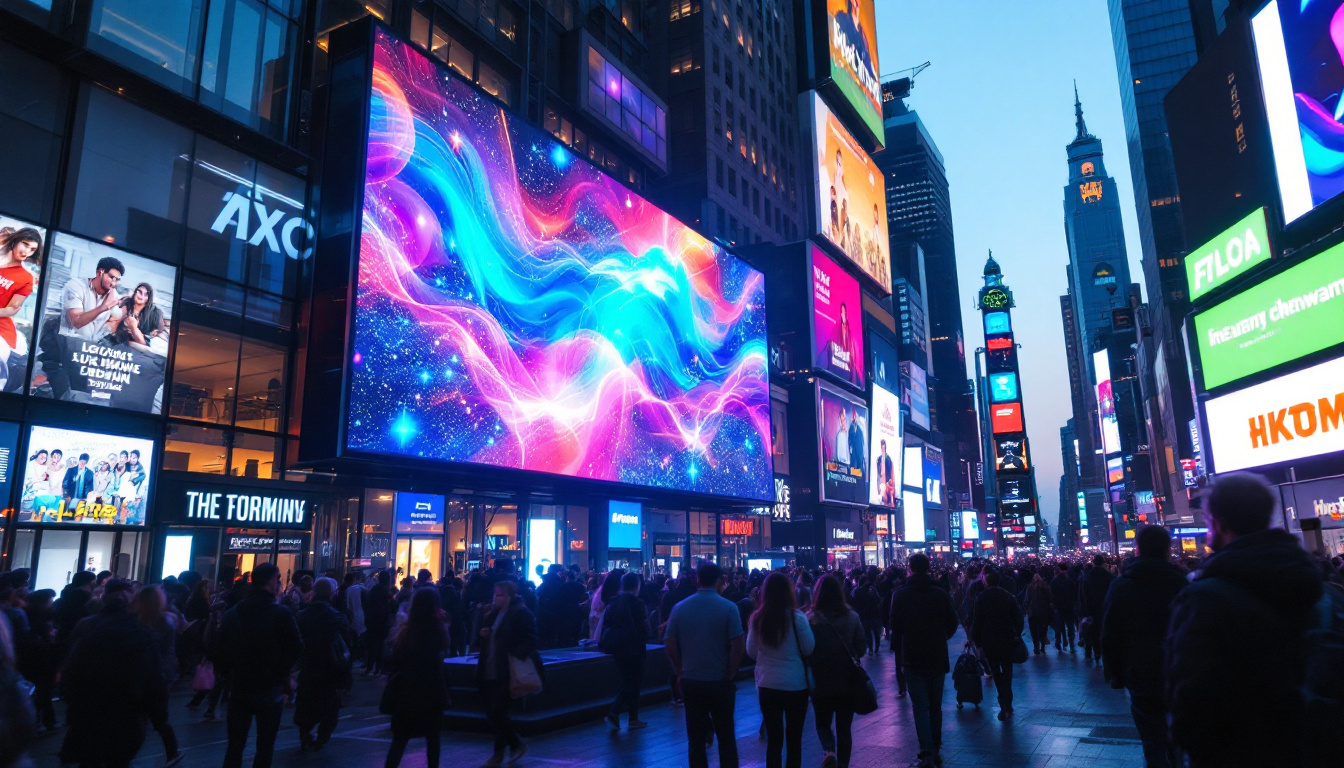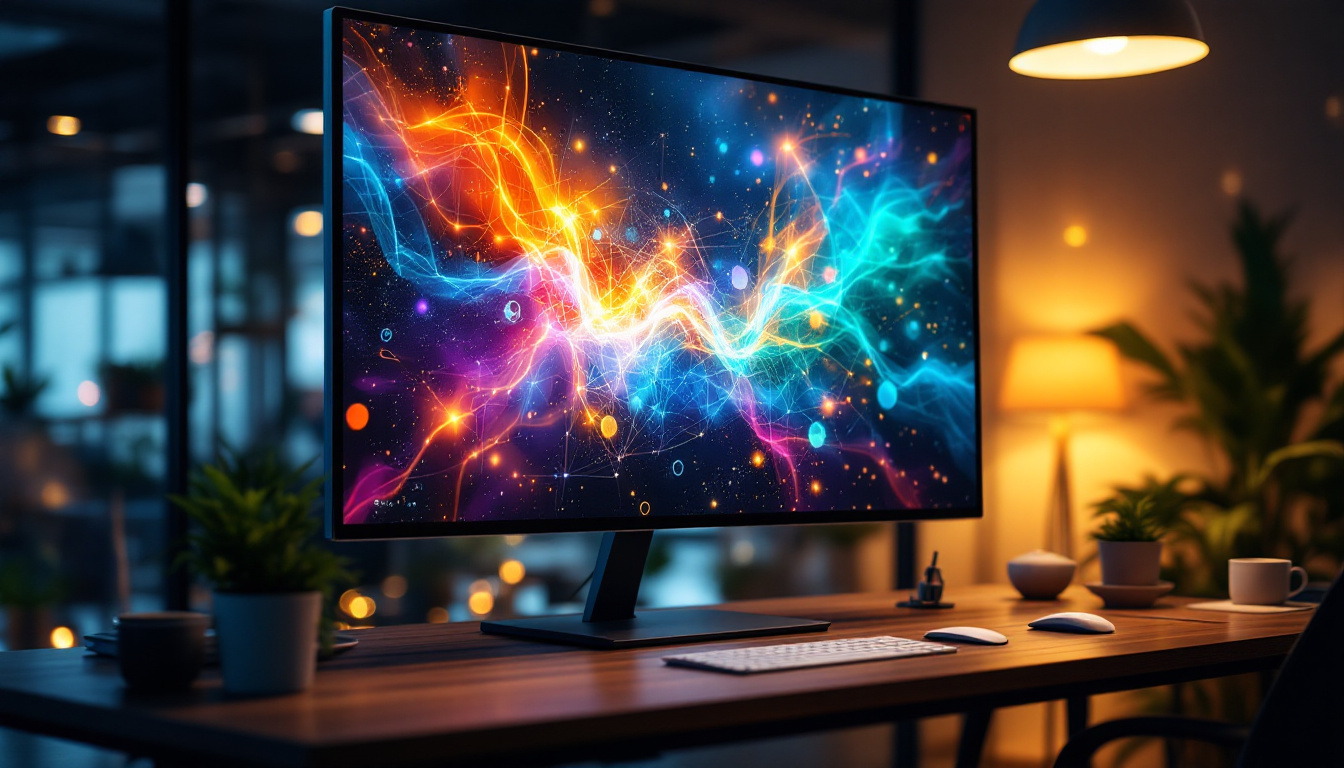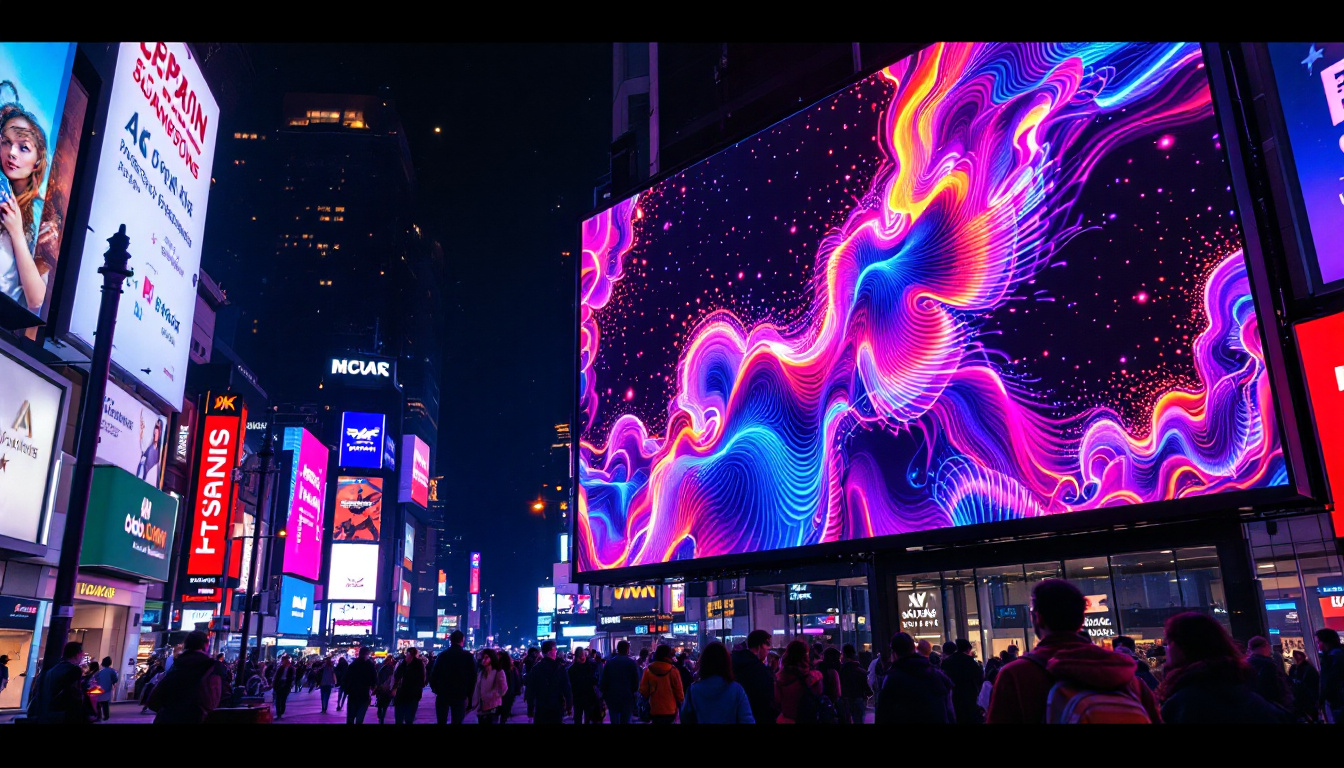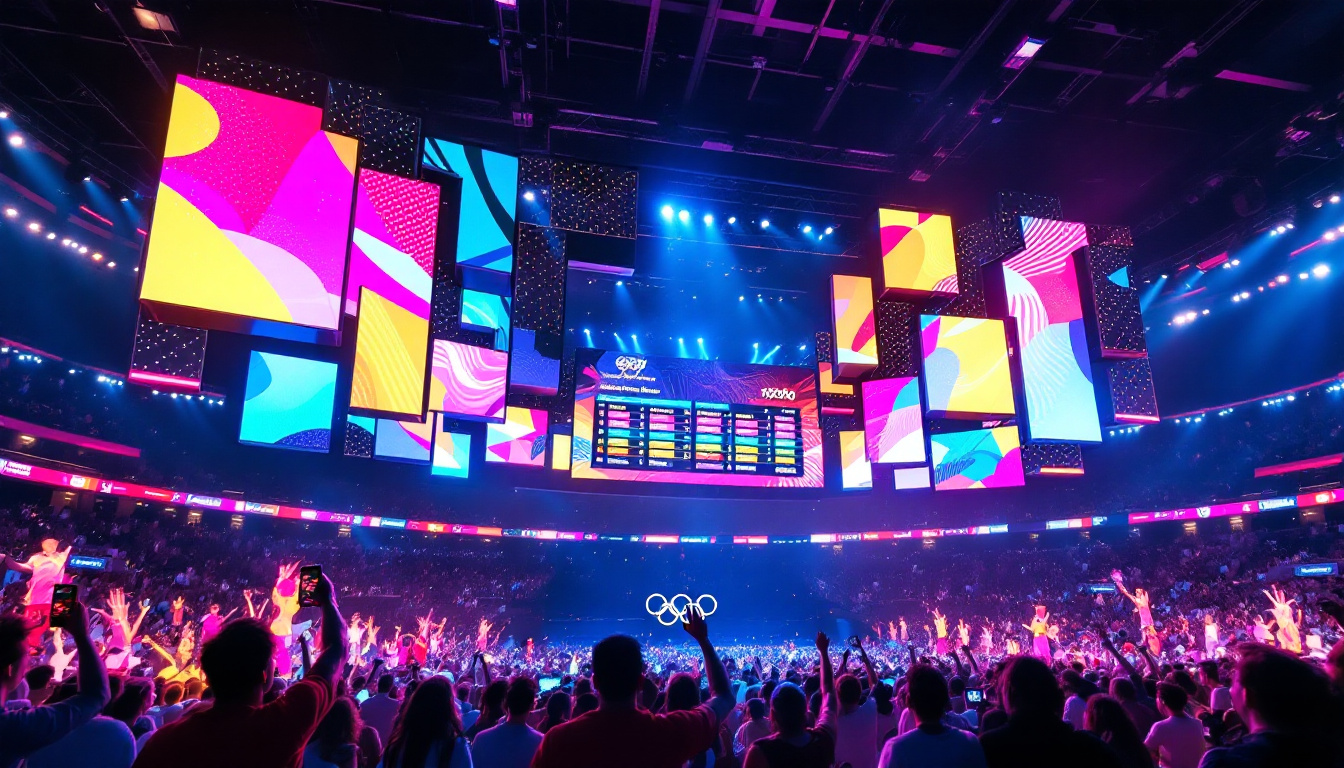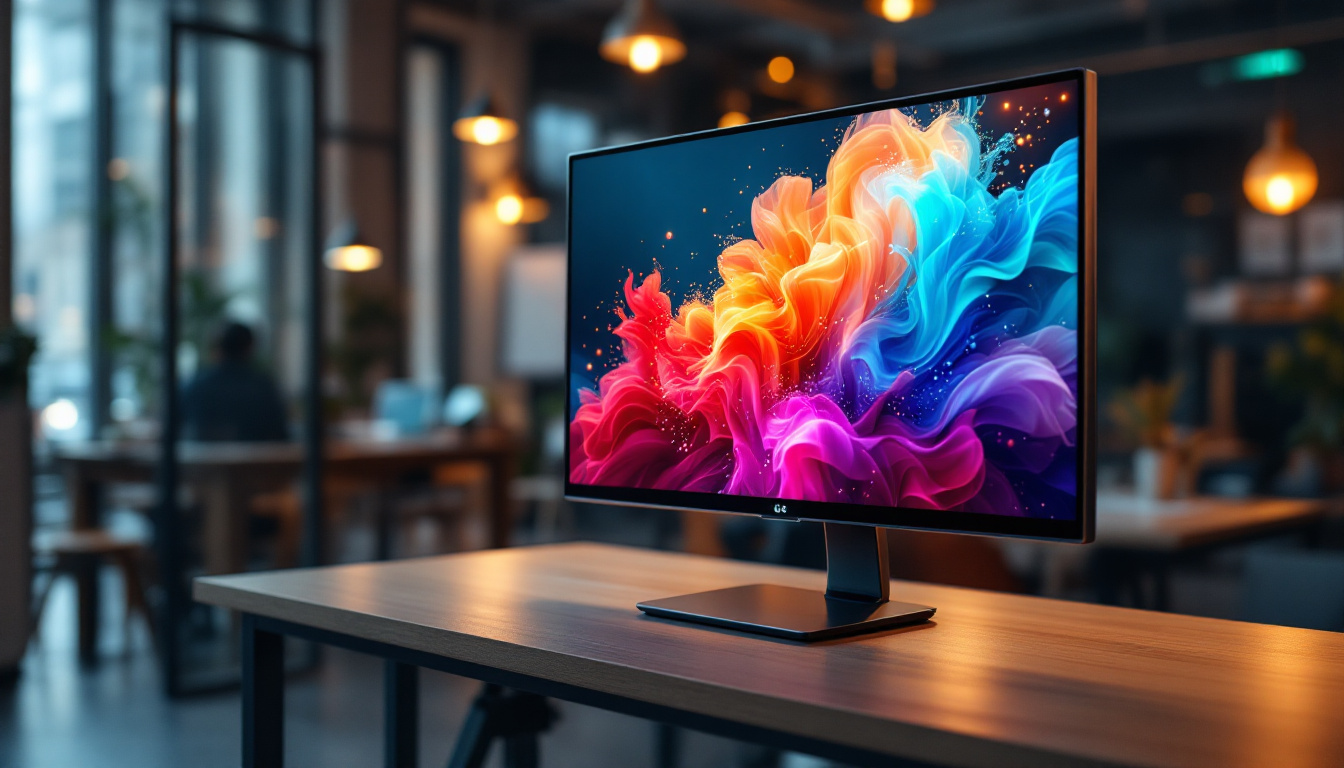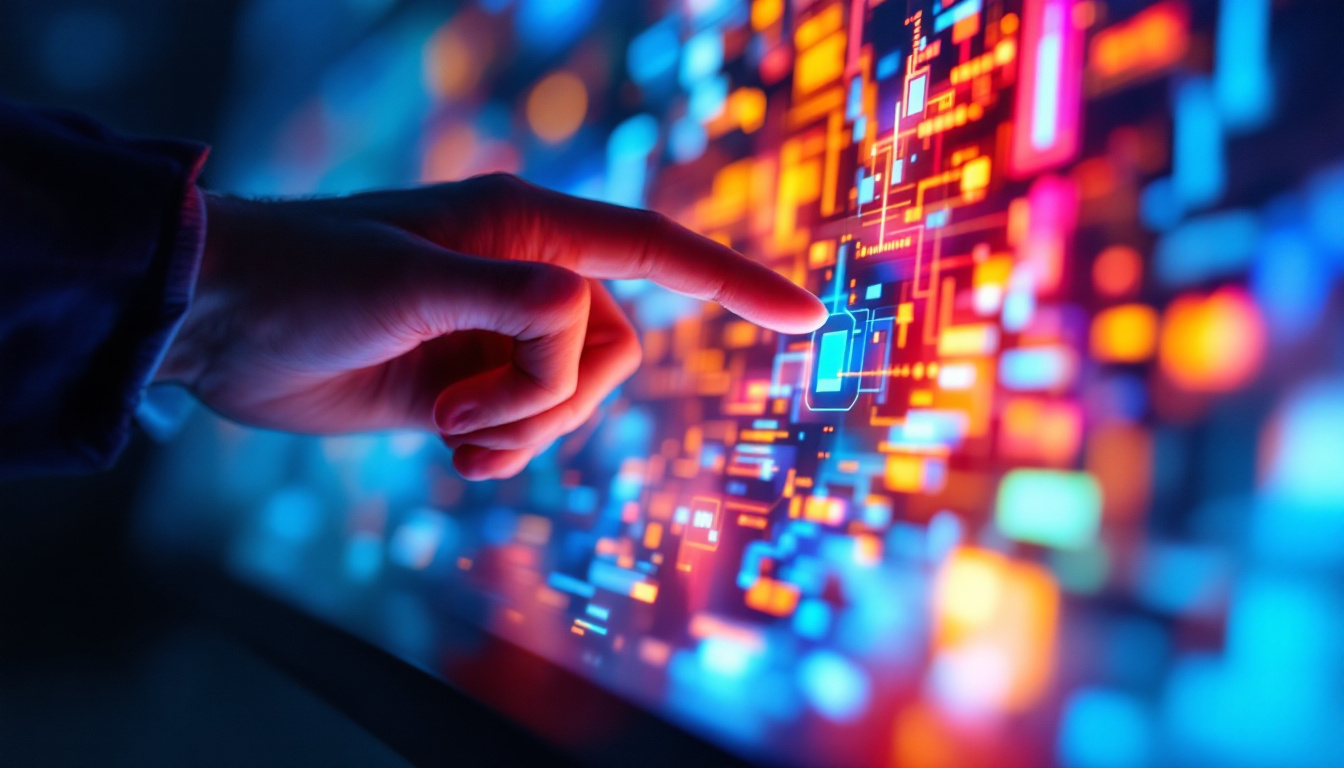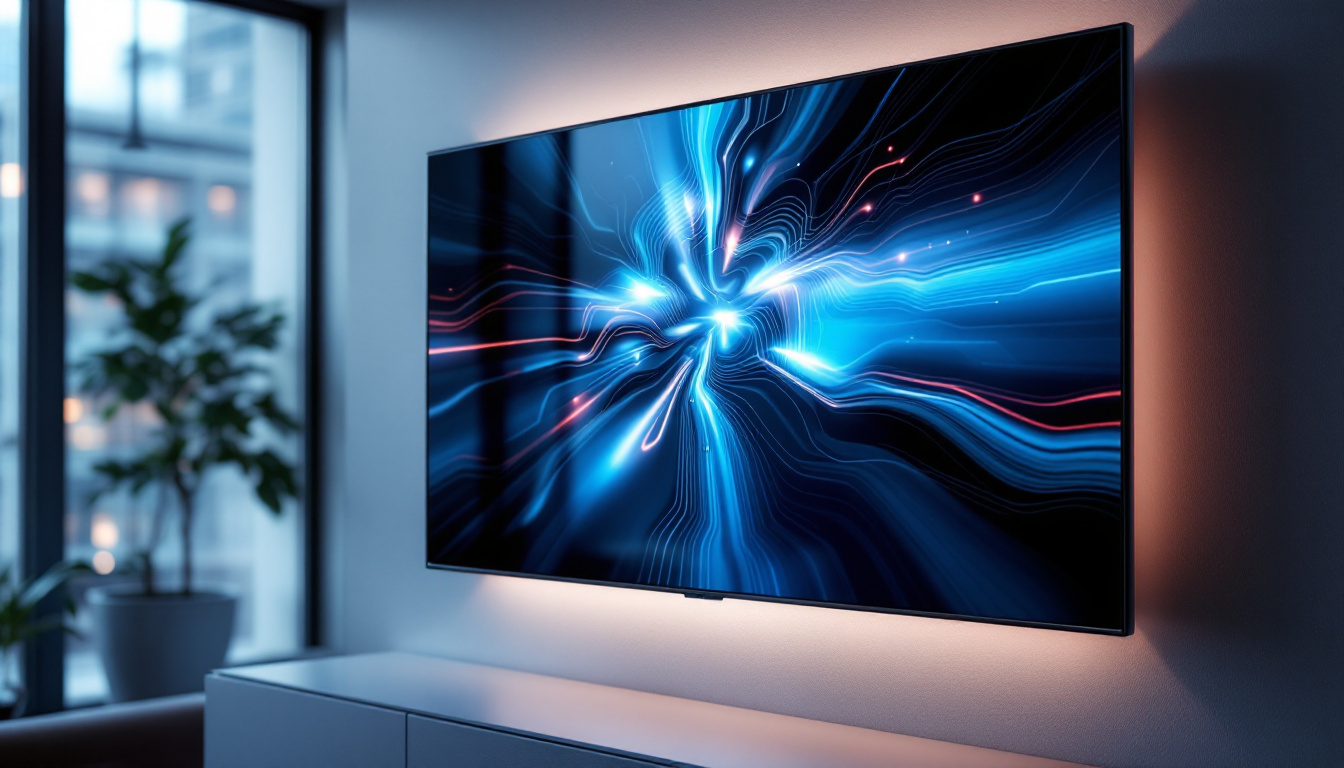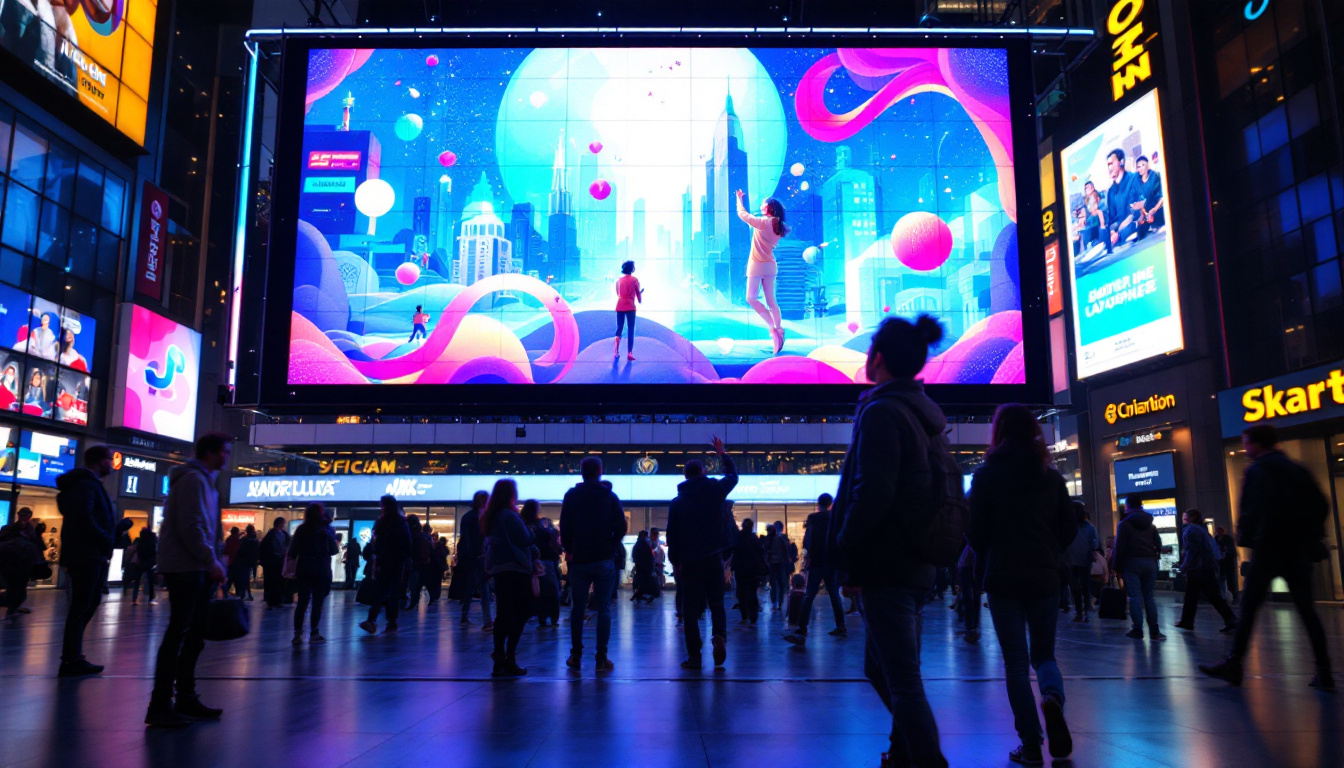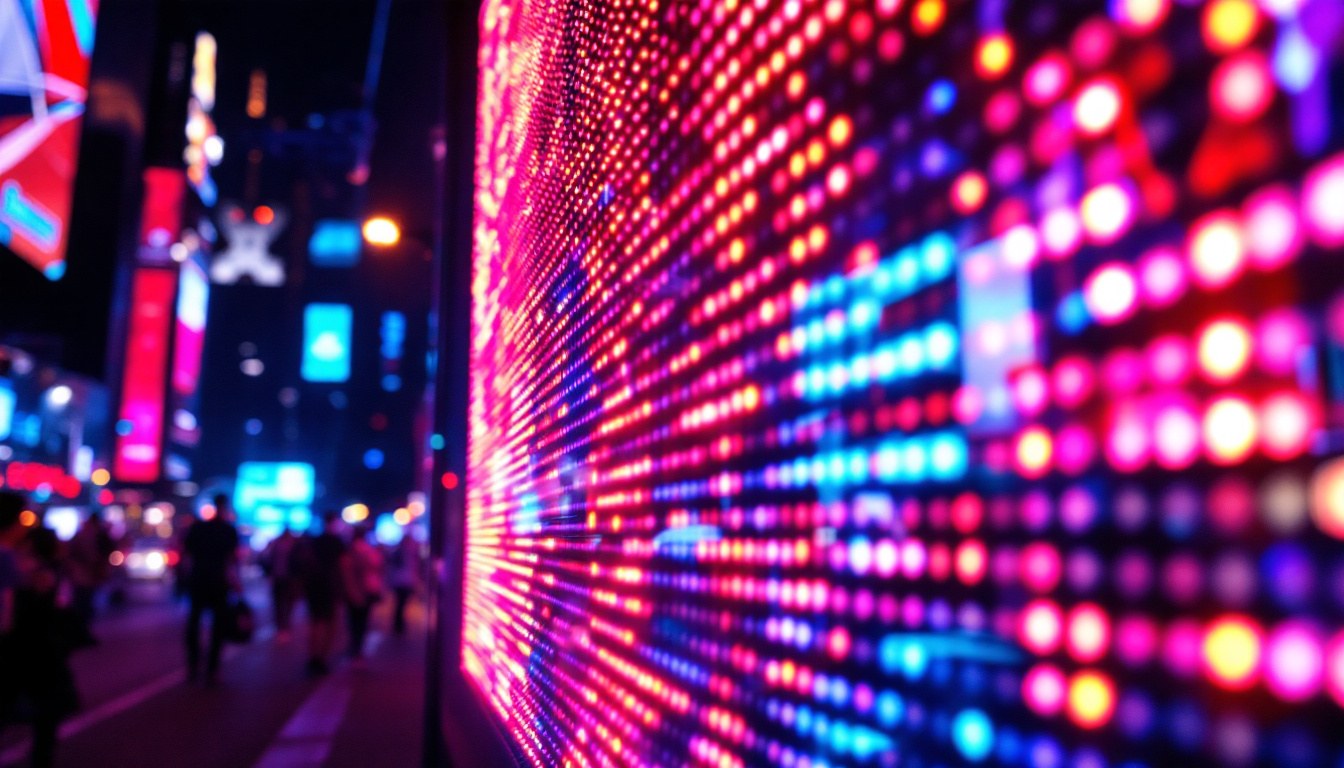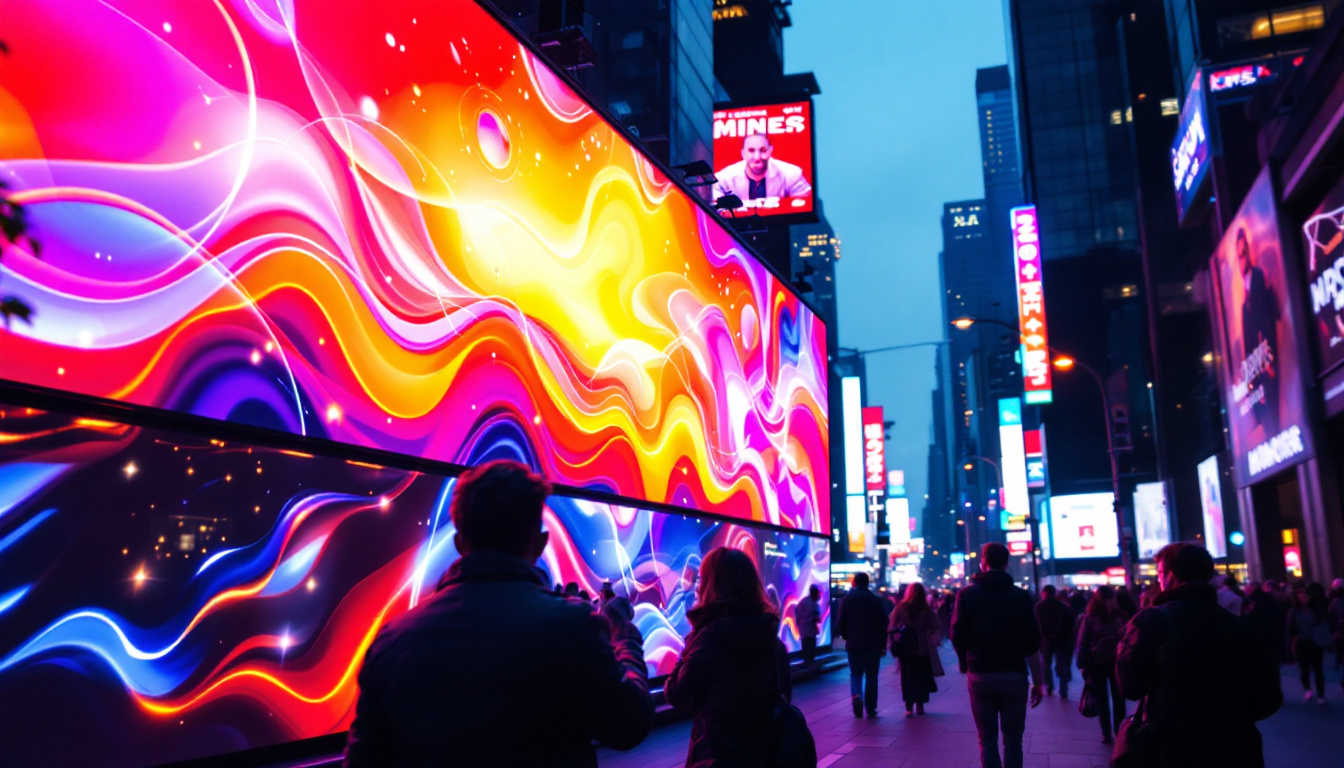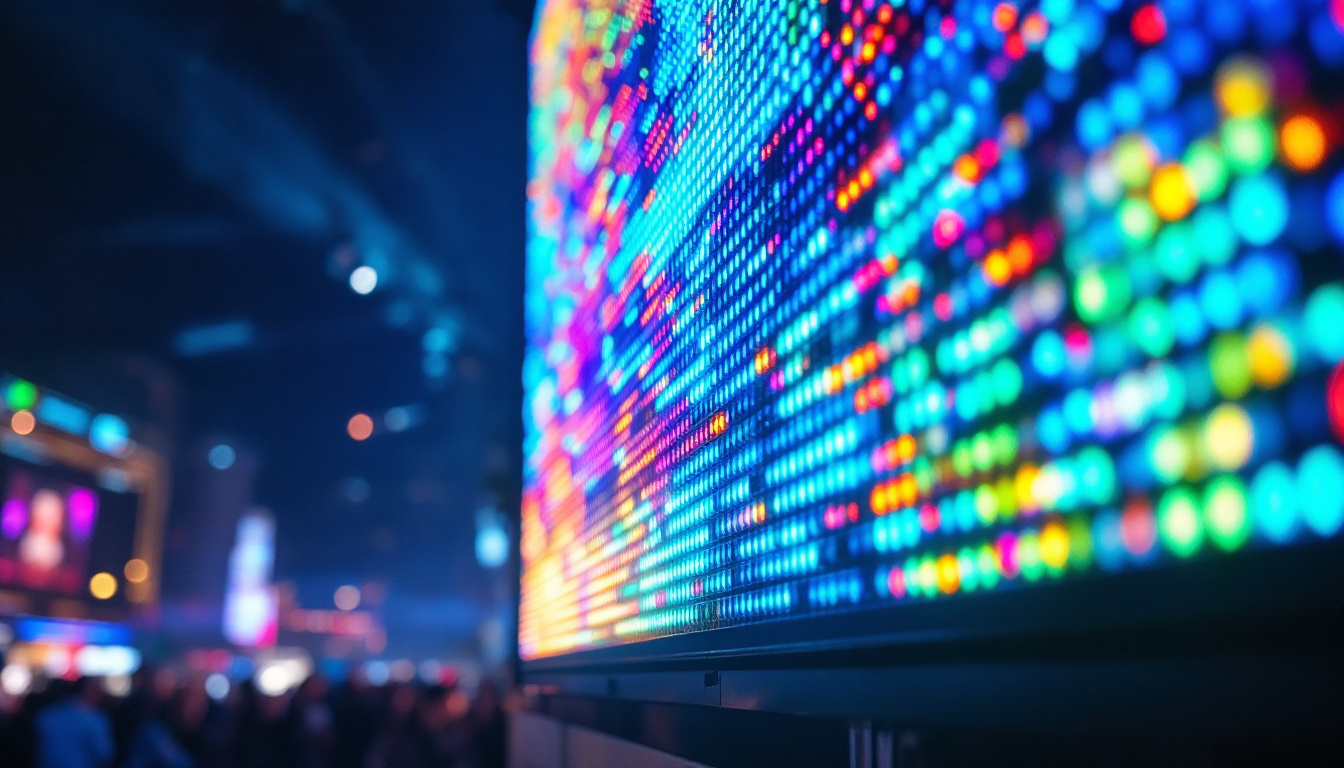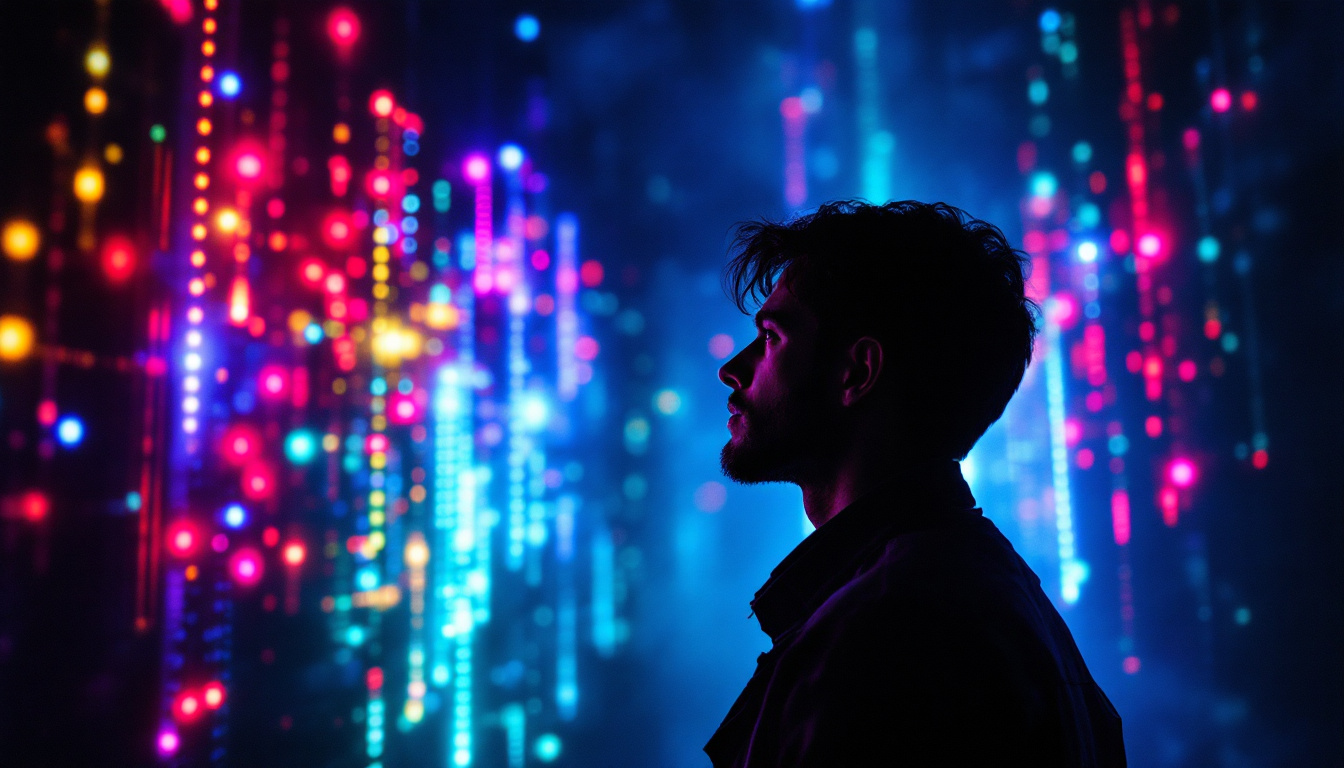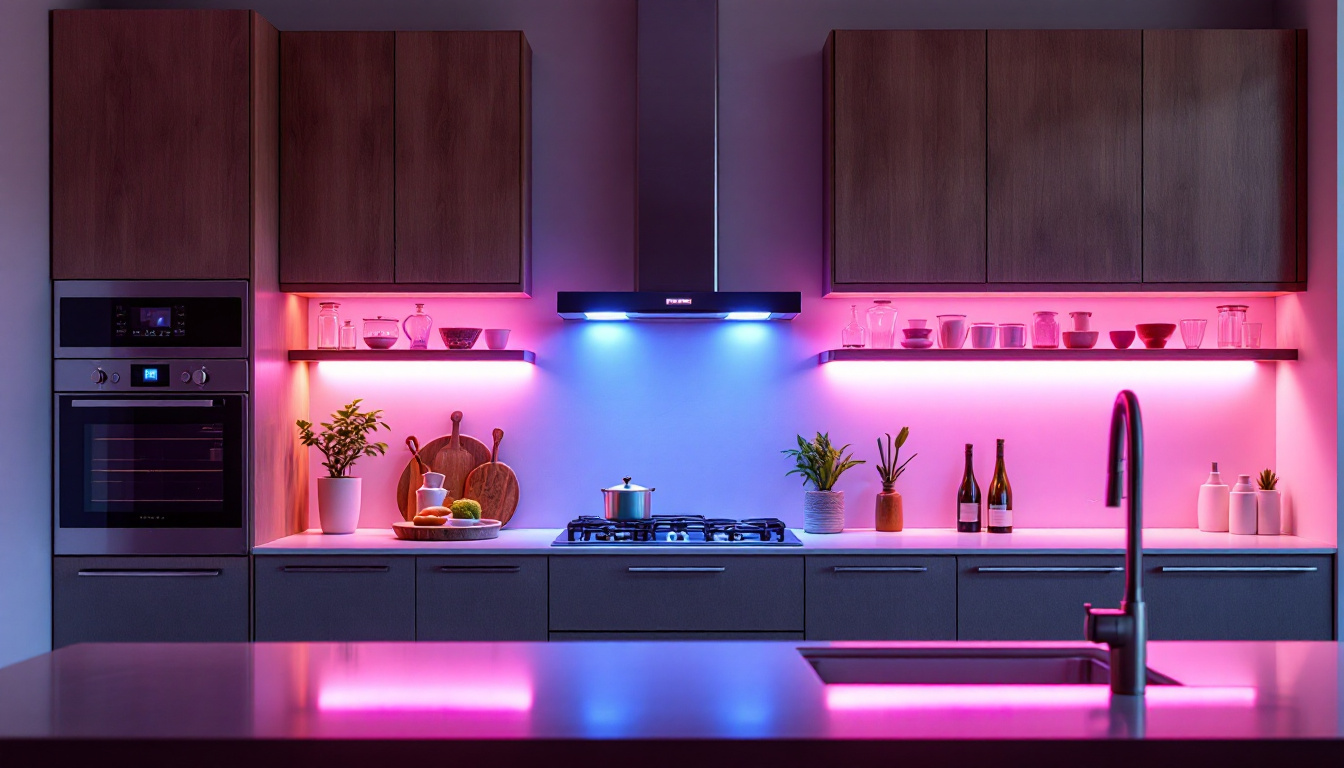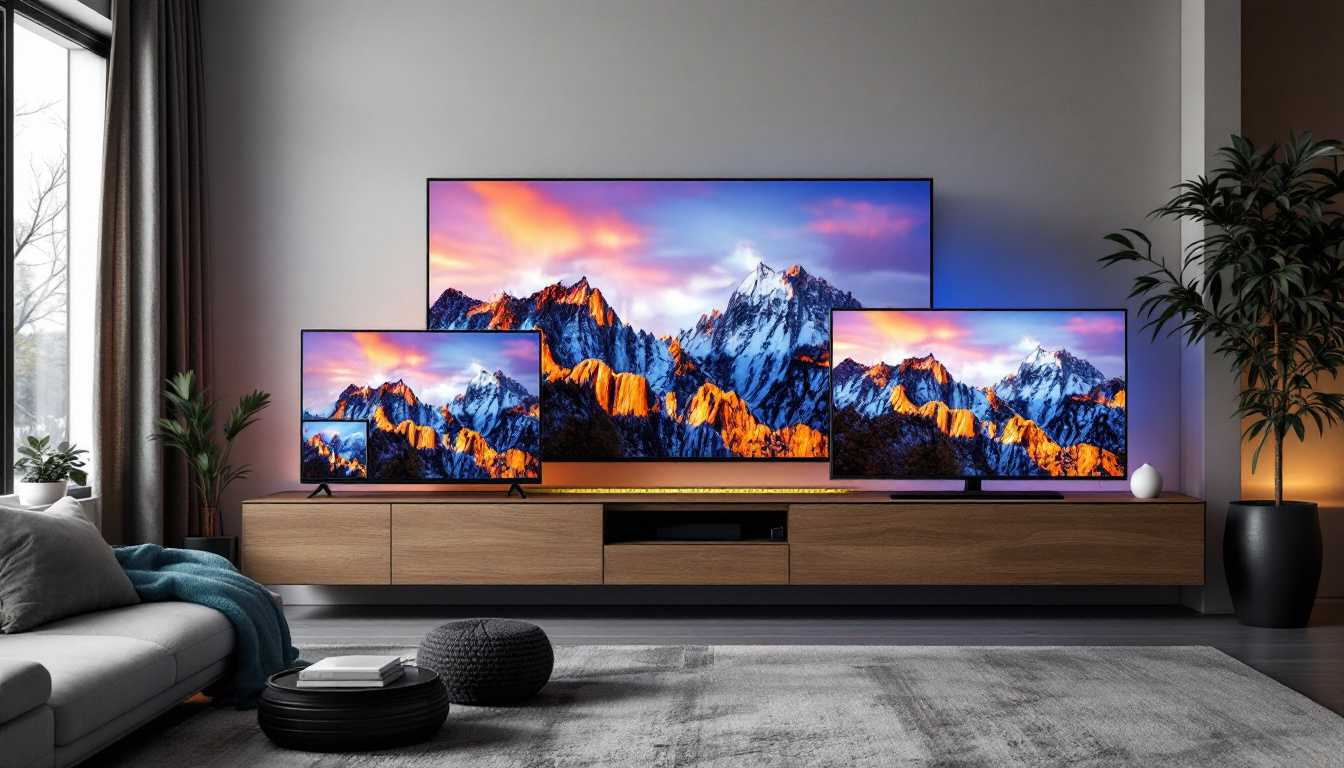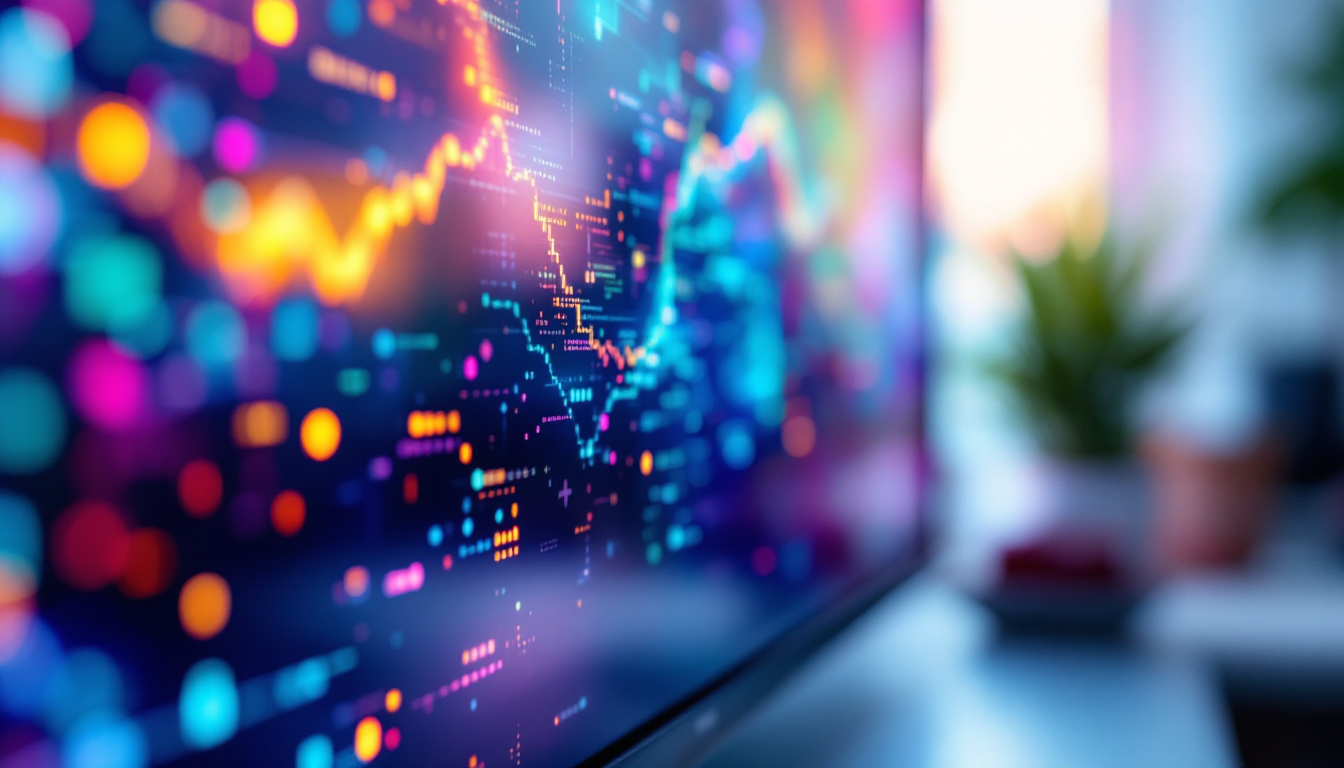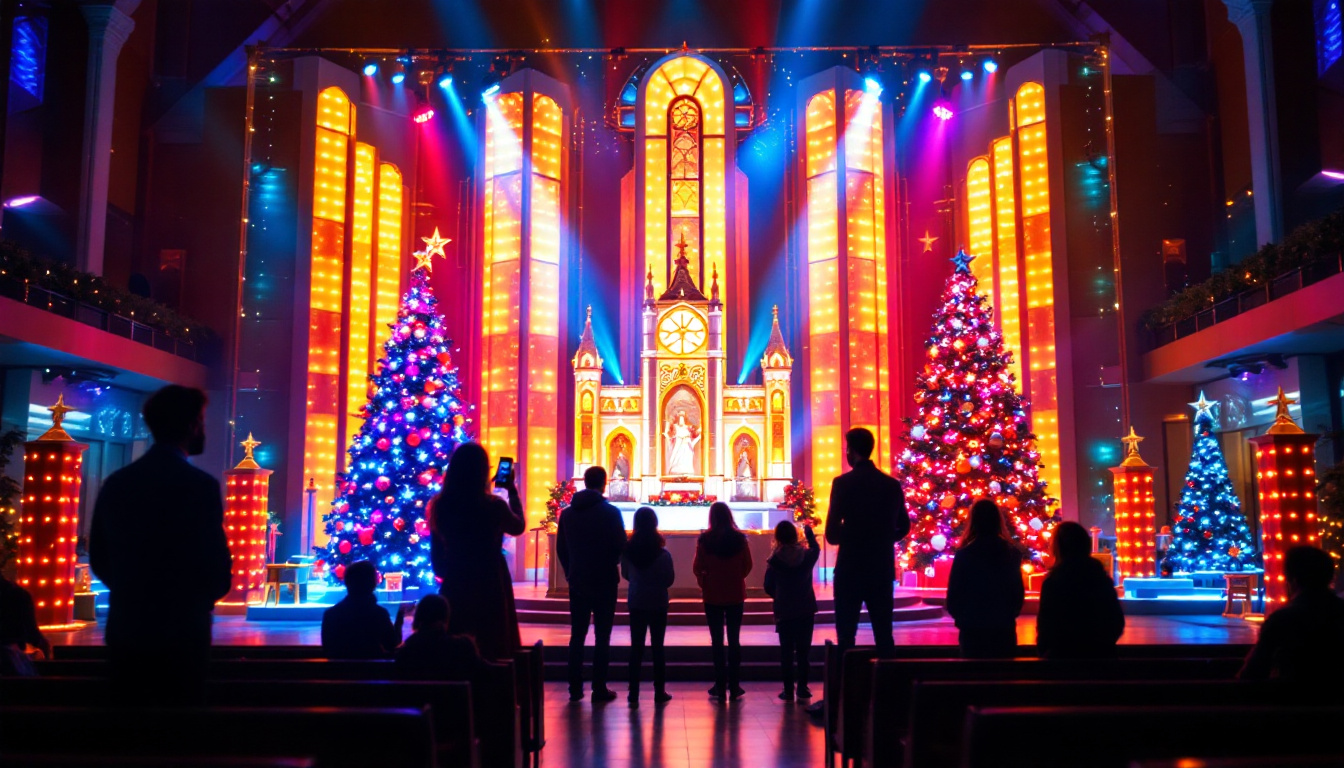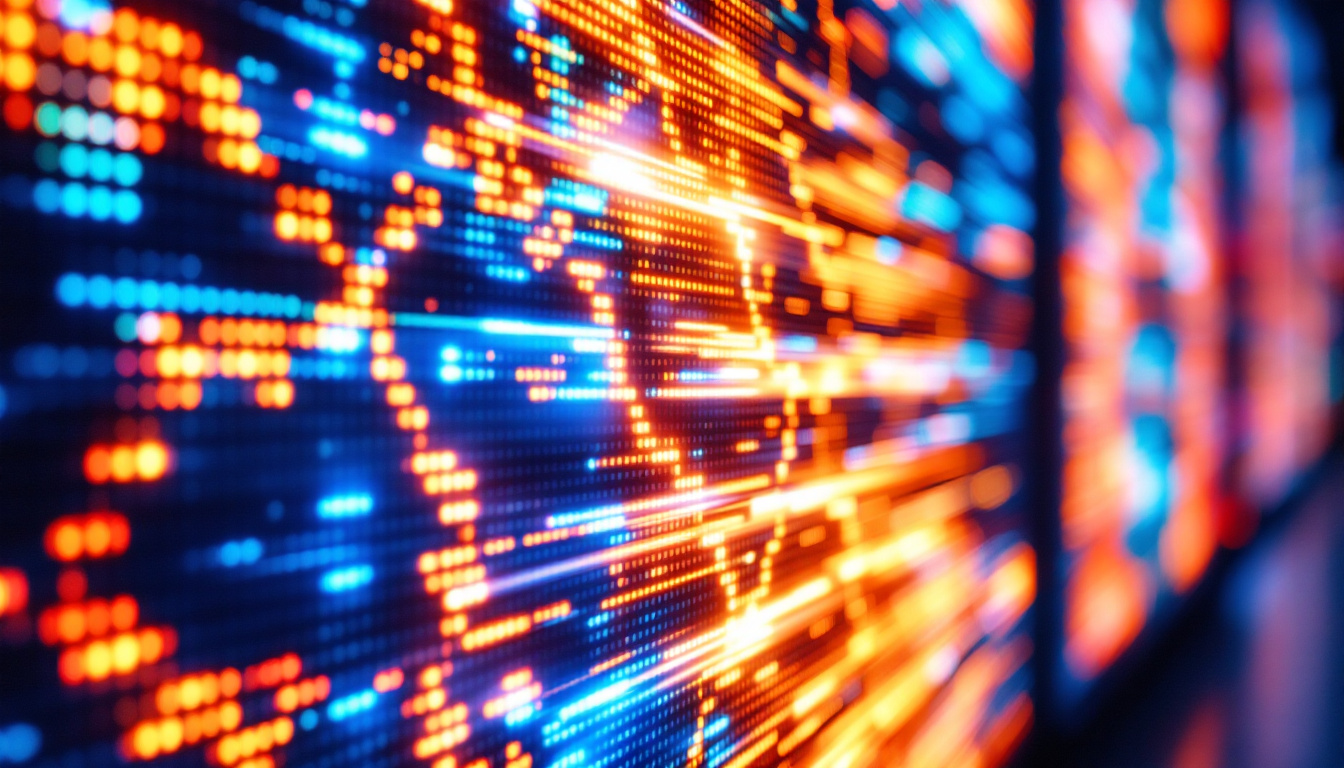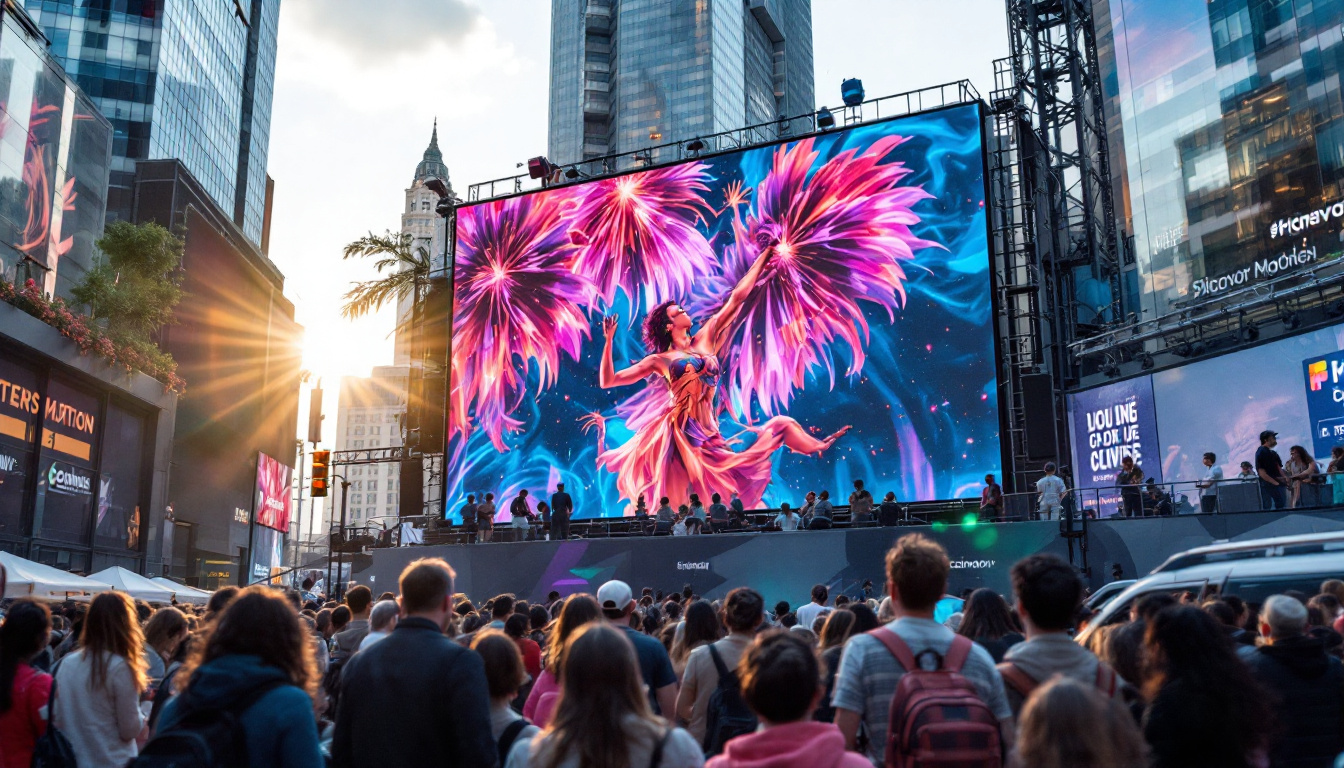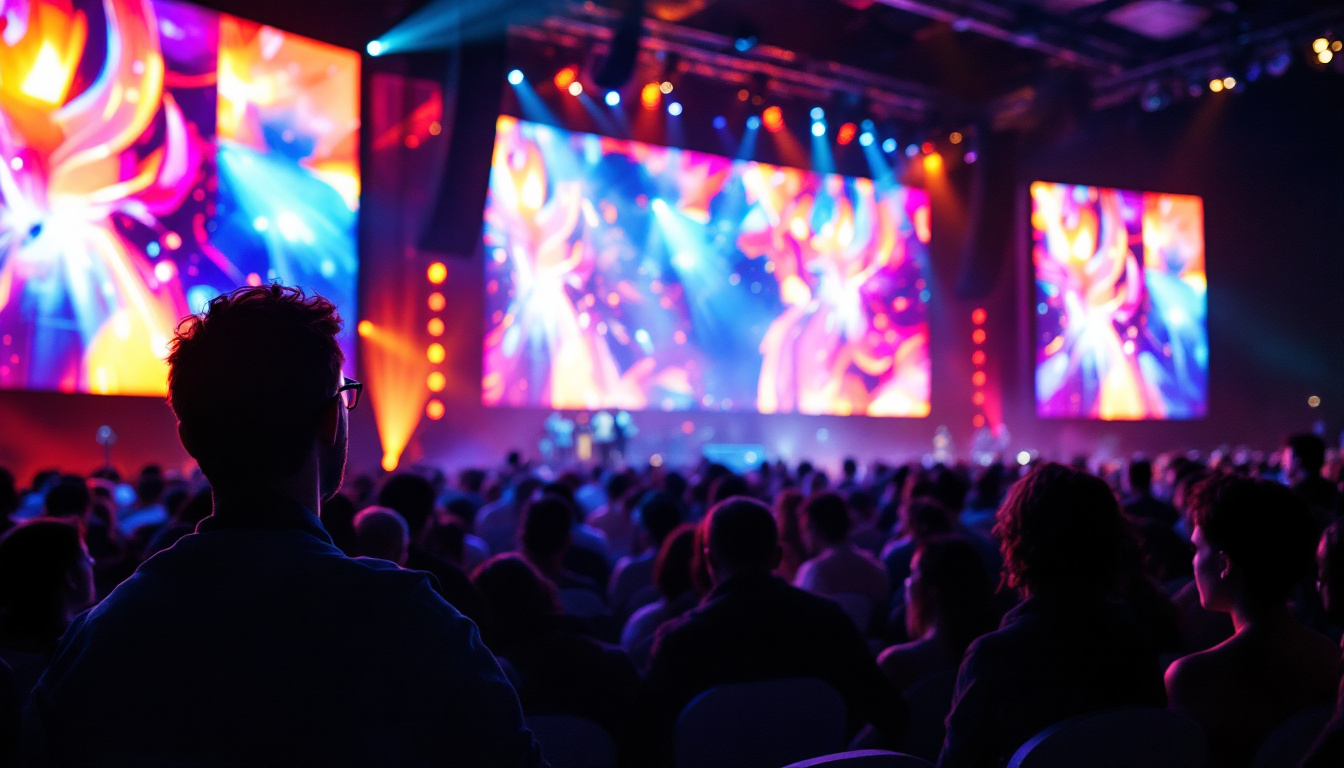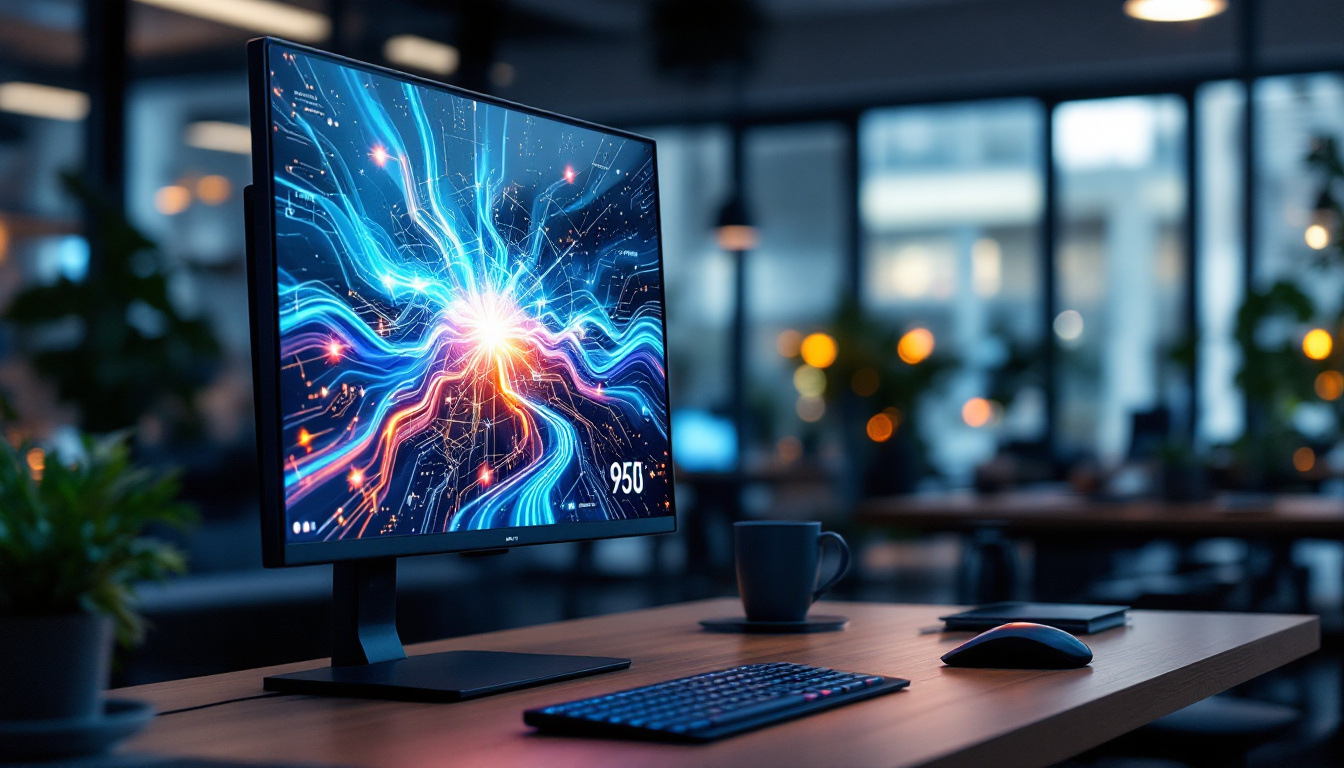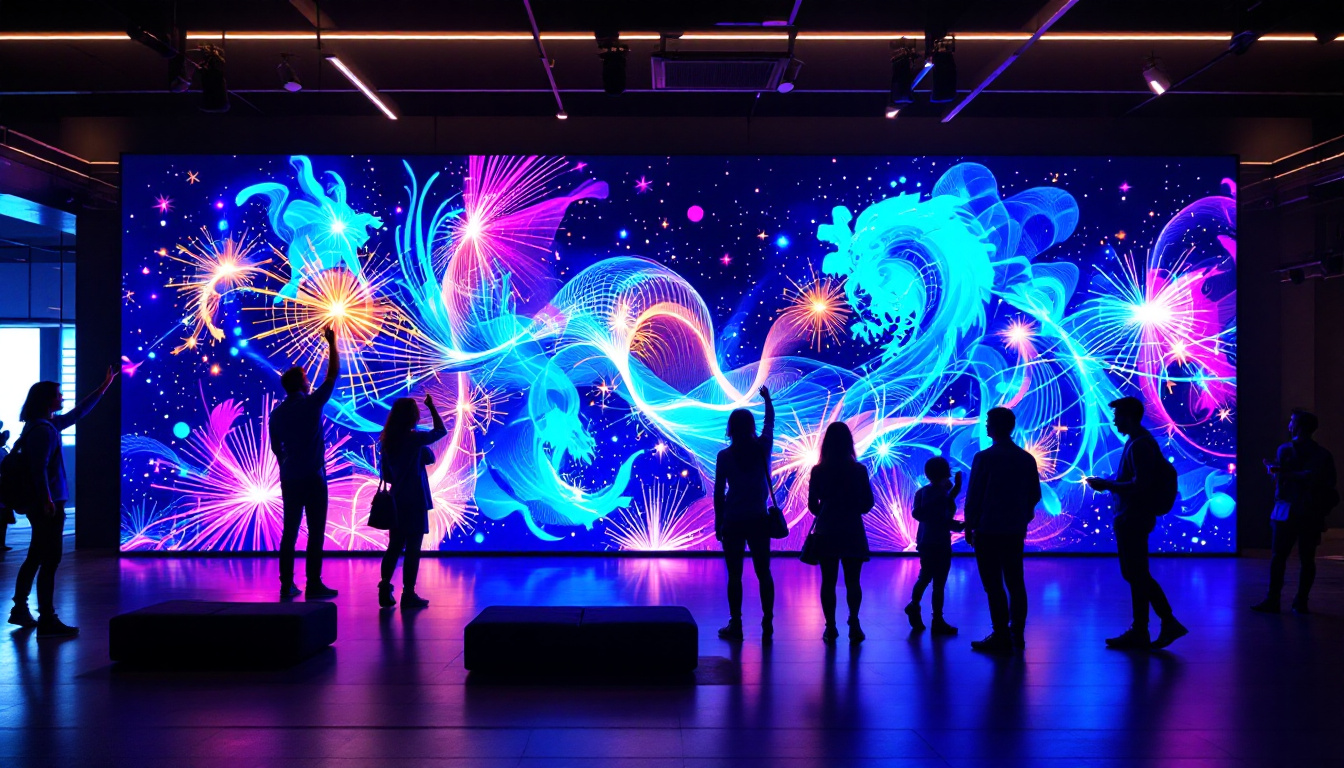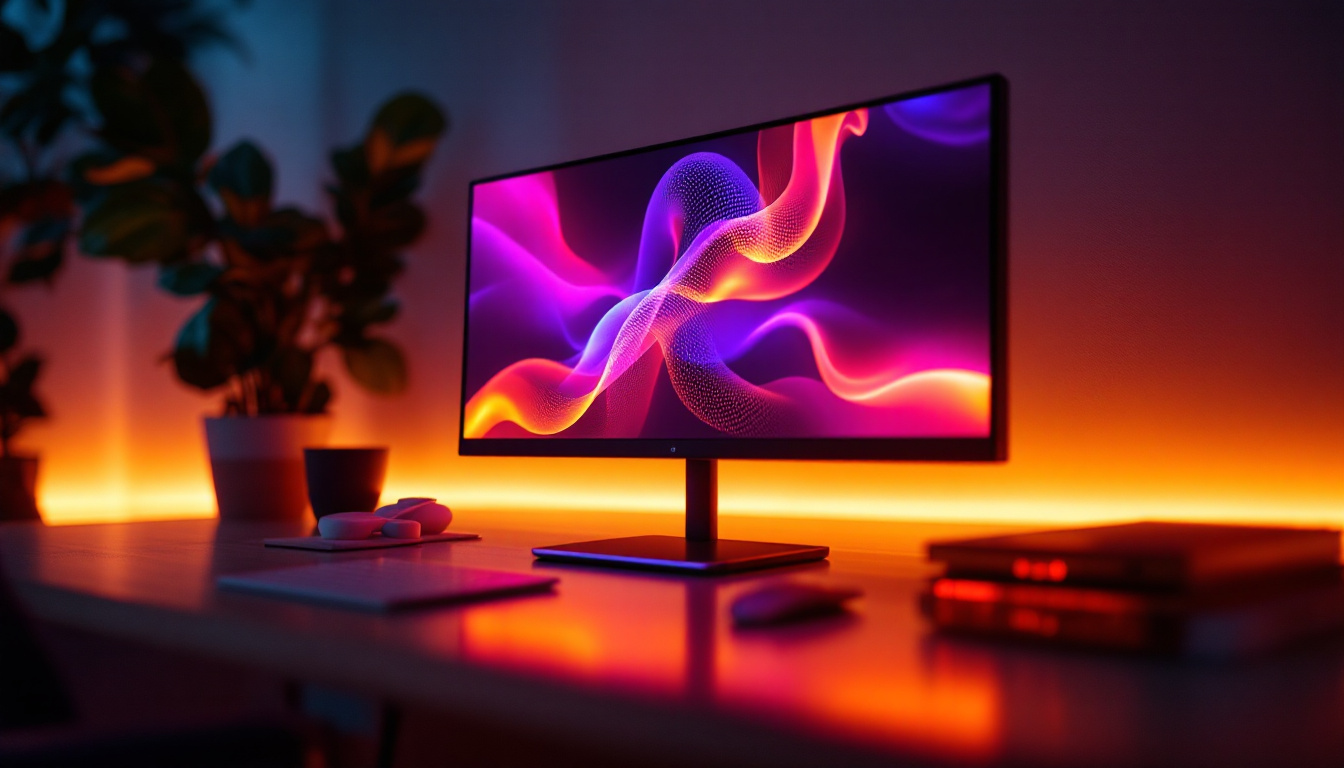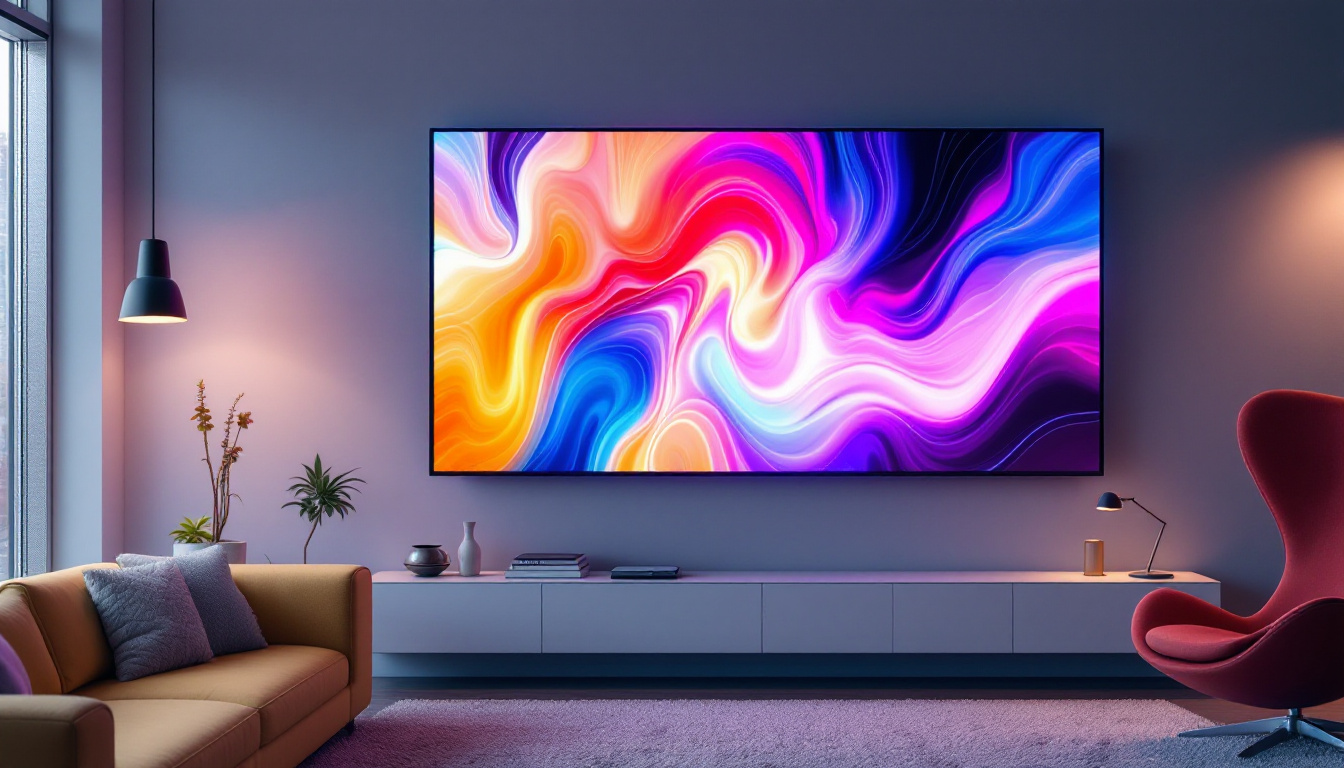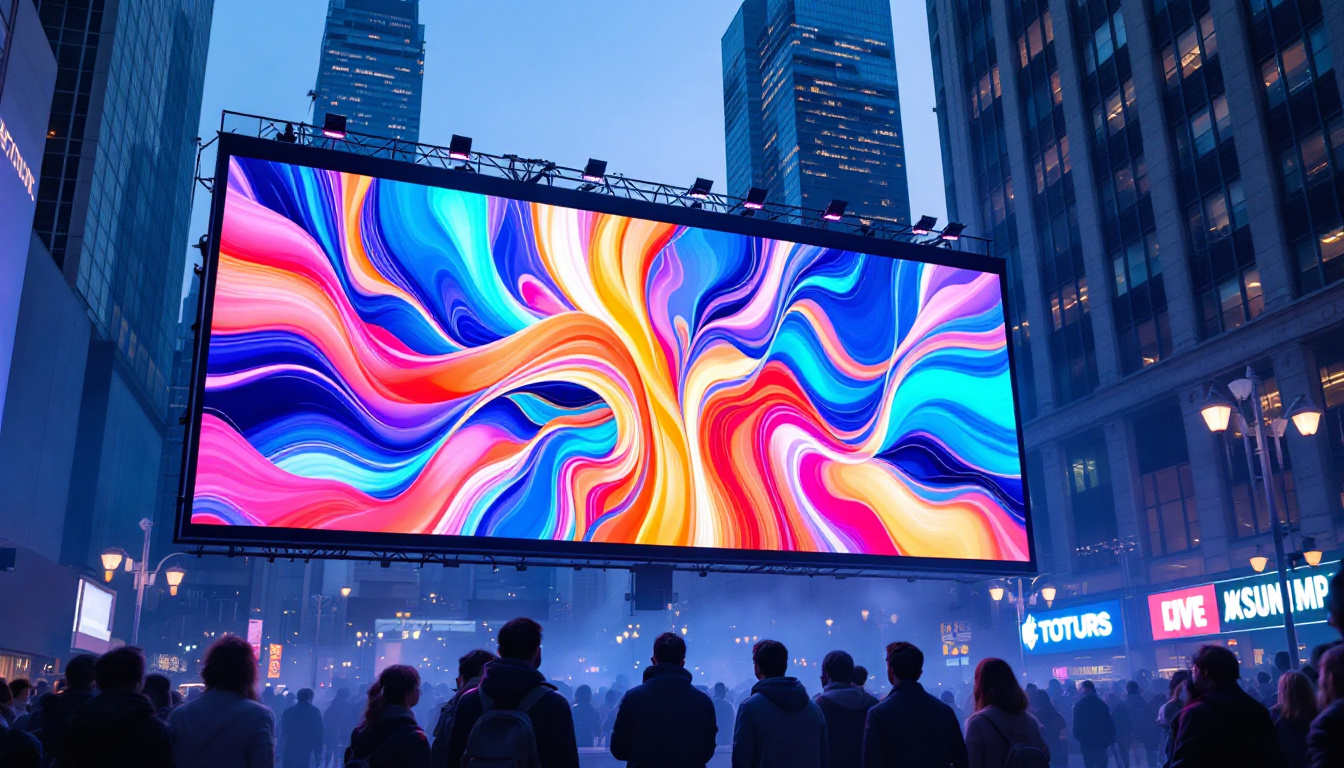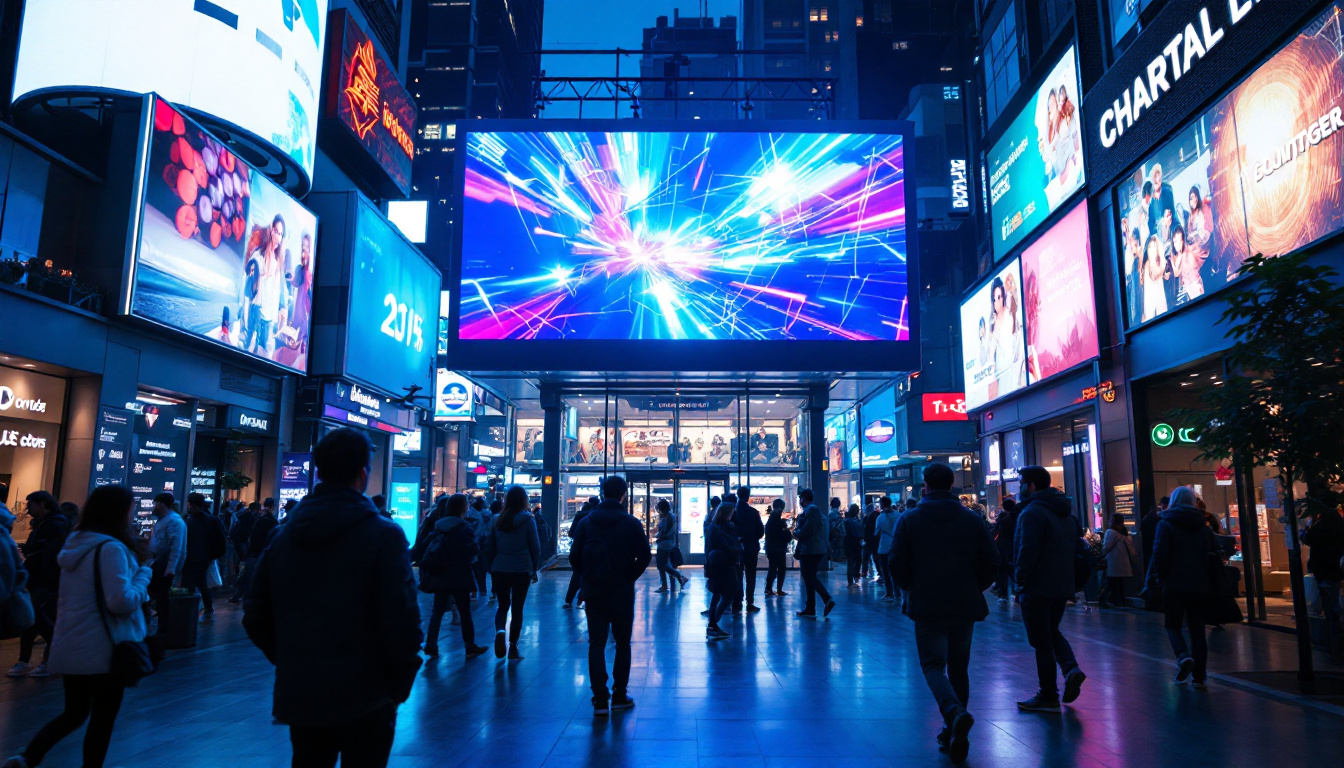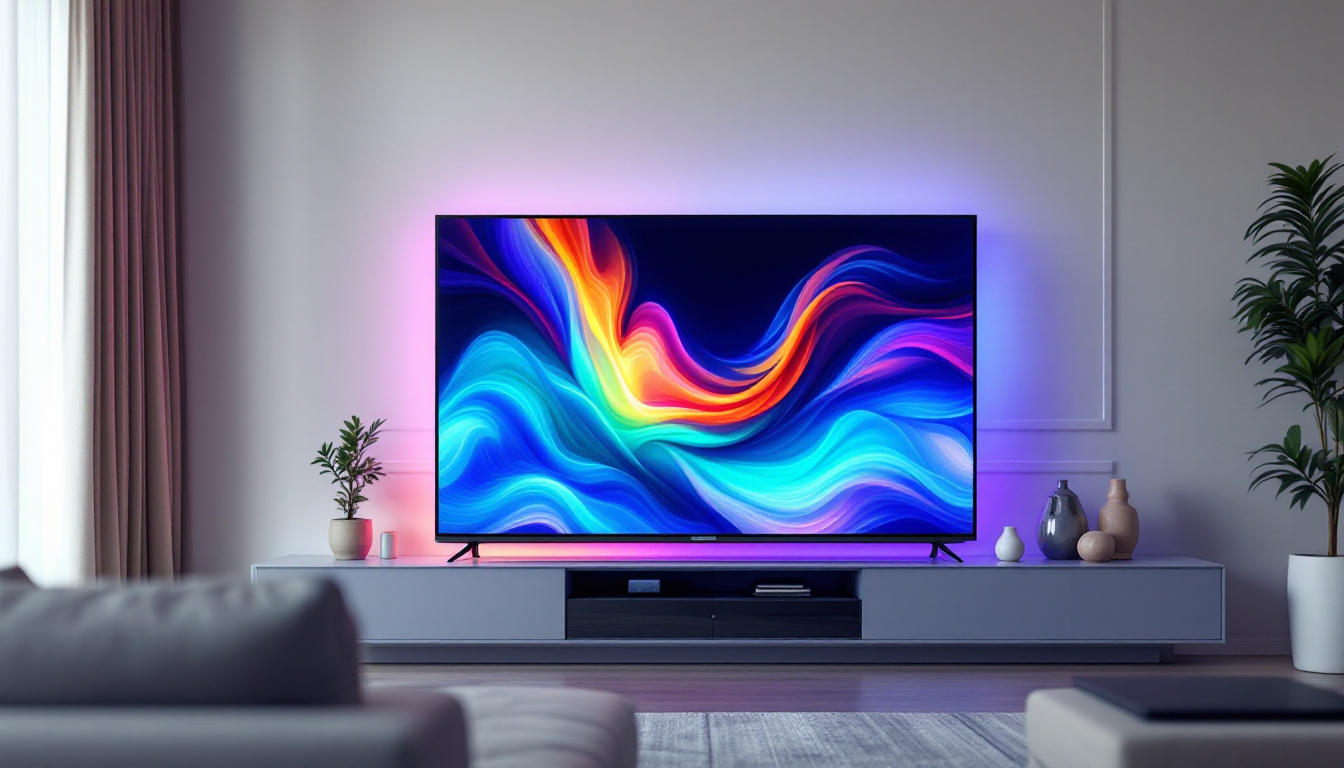In the realm of modern art and technology, the integration of LED displays into art display walls has revolutionized how art is experienced and appreciated. This innovative approach not only enhances visual appeal but also offers artists and curators a dynamic platform for showcasing their work. This article delves into the intricacies of LED display walls, exploring their advantages, applications, and the future they promise for the art world.
Understanding LED Display Technology
LED (Light Emitting Diode) technology has transformed various industries, and the art sector is no exception. The fundamental principle behind LED displays is the emission of light through semiconductor materials, which allows for vibrant colors and high brightness levels. This technology is characterized by its energy efficiency and longevity, making it a preferred choice for art installations.
How LED Displays Work
At its core, an LED display consists of numerous small diodes that emit light when an electric current passes through them. These diodes are arranged in a grid, forming pixels that can be individually controlled to create images and animations. The combination of red, green, and blue (RGB) diodes allows for a wide spectrum of colors, enabling artists to present their work in stunning detail.
LED displays can be categorized into two main types: direct view and projection. Direct view displays are composed of individual LED panels that can be seamlessly tiled together, while projection systems utilize a light source to project images onto a surface. Each type has its unique advantages, depending on the specific requirements of the art display. For instance, direct view displays are often favored for their clarity and brightness, making them ideal for high-traffic areas, while projection systems can create larger-than-life visuals that captivate audiences in expansive spaces.
Advantages of LED Displays in Art
One of the most significant advantages of LED displays is their ability to present artwork in a way that traditional mediums cannot. The brightness and color accuracy of LED technology ensure that artworks are displayed as intended, even in brightly lit environments. Additionally, LED displays can be programmed to change content dynamically, allowing for interactive installations that engage viewers in new and exciting ways. This interactivity can take many forms, from responsive visuals that change based on audience movement to synchronized soundscapes that enhance the visual experience, creating a multi-sensory journey for the viewer.
Another key benefit is the versatility of LED displays. They can be used in various settings, from galleries and museums to outdoor installations and public spaces. This adaptability enables artists to reach broader audiences and create immersive experiences that transcend the limitations of traditional art forms. Furthermore, the lightweight and modular nature of LED technology allows for innovative designs and configurations, such as curved or three-dimensional displays that challenge conventional perspectives on art presentation. As artists continue to explore the potential of LED displays, the boundaries of creativity are pushed further, leading to groundbreaking works that redefine how art is experienced and understood.
Applications of LED Display Walls in Art
The applications of LED display walls in the art world are vast and varied. Artists and curators are increasingly embracing this technology to enhance their exhibitions and create unique experiences for viewers. Below are some notable applications of LED display walls in the art sector.
Interactive Art Installations
interactive art installations have gained popularity in recent years, and LED display walls play a crucial role in their success. By incorporating sensors and software, artists can create installations that respond to viewer movements or inputs. This interactivity fosters a deeper connection between the audience and the artwork, making the experience more memorable.
For example, an artist may design a display that changes colors or patterns based on the proximity of viewers, encouraging them to engage with the piece actively. Such installations not only captivate audiences but also challenge traditional notions of art as a static medium.
Dynamic Exhibitions
LED display walls enable curators to create dynamic exhibitions that can change over time. Instead of being limited to a fixed collection of artworks, galleries can rotate pieces, showcase new artists, or even present themed exhibitions that evolve throughout the year. This flexibility allows for a more engaging visitor experience, as there is always something new to see.
Moreover, the ability to display high-resolution images and videos means that curators can present artworks in various formats, including animations and digital art. This capability broadens the scope of what can be considered art, inviting a diverse range of creative expressions into the gallery space.
Outdoor Art Displays
Outdoor art displays benefit significantly from LED technology due to its brightness and visibility in daylight. Public spaces can be transformed into vibrant art galleries, where large-scale LED screens display artworks, animations, or even live performances. This approach not only beautifies urban environments but also democratizes art by making it accessible to a wider audience.
Additionally, outdoor LED displays can be programmed to showcase local artists, fostering community engagement and support for the arts. By bringing art to public spaces, cities can enhance their cultural landscape and encourage dialogue among residents and visitors alike.
Challenges of Implementing LED Display Walls
While the advantages of LED display walls are numerous, there are also challenges associated with their implementation. Understanding these challenges is crucial for artists, curators, and institutions looking to adopt this technology.
Cost Considerations
The initial investment for LED display walls can be substantial. High-quality LED panels, installation, and maintenance can add up quickly, making it a significant financial commitment for galleries and artists. However, it is essential to consider the long-term benefits, such as reduced energy costs and the potential for increased visitor engagement, which can offset these initial expenses over time.
Furthermore, funding opportunities, grants, and sponsorships can help alleviate some of the financial burdens associated with implementing LED technology in art spaces. Collaborating with local businesses or seeking partnerships with tech companies can also provide valuable resources and support.
Technical Challenges
Integrating LED display walls into existing art spaces can pose technical challenges, particularly regarding installation and compatibility with other systems. Ensuring that the display is properly calibrated for color accuracy and brightness is vital for maintaining the integrity of the artwork being displayed.
Additionally, artists and curators may need to invest time in learning how to create content specifically for LED displays. This may involve acquiring new skills in digital art creation, video editing, or programming interactive elements. While this learning curve can be daunting, it also presents an opportunity for artists to expand their creative toolkit.
Environmental Considerations
As with any technology, environmental considerations play a role in the adoption of LED display walls. While LED technology is generally more energy-efficient than traditional lighting, the production and disposal of electronic components can have environmental impacts. Artists and institutions should strive to source sustainable materials and consider the lifecycle of their installations.
Moreover, using LED displays in a way that minimizes energy consumption, such as employing smart technology to adjust brightness based on ambient light, can further reduce the environmental footprint of art installations.
The Future of Art Display Walls
The future of art display walls is poised for exciting developments as technology continues to evolve. Innovations in LED technology, software, and interactivity are likely to shape the way art is created, displayed, and experienced.
Emerging Technologies
Advancements in augmented reality (AR) and virtual reality (VR) are set to enhance the capabilities of LED display walls. Artists may soon be able to create immersive experiences that blend physical and digital art, allowing viewers to interact with artworks in entirely new ways. For instance, an LED display could serve as a portal to a virtual gallery, where viewers can explore 3D representations of artworks or even participate in virtual art-making experiences.
Moreover, developments in artificial intelligence (AI) may lead to the creation of adaptive art installations that respond to viewer emotions or preferences. Such innovations could redefine the relationship between art and audience, making each experience unique and personalized.
Global Accessibility
As technology becomes more accessible, the potential for LED display walls to democratize art continues to grow. Artists from diverse backgrounds and regions can leverage this technology to share their work with global audiences, breaking down geographical barriers. Online platforms and virtual exhibitions can further amplify this reach, allowing for a more inclusive art world.
Additionally, community-driven projects that utilize LED displays can empower local artists and foster cultural exchange. By showcasing regional art in public spaces, communities can celebrate their unique identities while promoting dialogue and understanding among different cultures.
Redefining Art Spaces
The integration of LED display walls is likely to redefine traditional art spaces, transforming galleries and museums into dynamic environments that prioritize interactivity and engagement. As audiences increasingly seek immersive experiences, institutions may need to adapt their approaches to curation and exhibition design.
This shift could lead to a new era of art appreciation, where viewers are not just passive observers but active participants in the artistic process. By embracing LED technology, the art world can continue to evolve, fostering creativity and innovation in ways previously unimaginable.
Conclusion
Art display walls utilizing LED technology represent a significant advancement in the way art is experienced and appreciated. With their vibrant colors, dynamic capabilities, and interactive potential, LED displays offer artists and curators a powerful tool for engaging audiences. While challenges exist, the benefits of this technology far outweigh the drawbacks, paving the way for a future where art is more accessible, immersive, and innovative than ever before.
As the art world continues to embrace technological advancements, the possibilities for LED display walls are limitless. By harnessing this technology, artists can push the boundaries of creativity, inviting viewers to engage with art in ways that inspire, provoke, and connect. The journey of art and technology is just beginning, and the future holds exciting prospects for both creators and audiences alike.
Explore the Future of Art Displays with LumenMatrix
Ready to transform your art displays into immersive masterpieces? Discover the innovative world of LumenMatrix LED display solutions, where cutting-edge technology meets creative vision. From Indoor and Outdoor LED Wall Displays to specialized solutions like Vehicle, Sports, and Floor LED Displays, LumenMatrix offers a diverse range of products designed to bring your visual experiences to life. Embrace the future of art and visual communication with our Custom, All-in-One, and Transparent LED Displays. Check out LumenMatrix LED Display Solutions and see how we can help you create captivating displays that engage and inspire.

